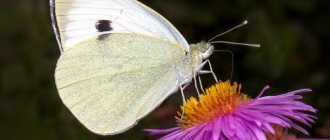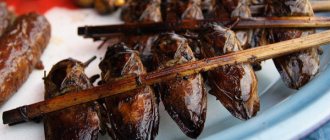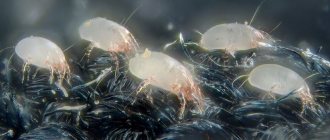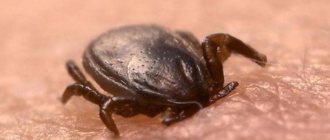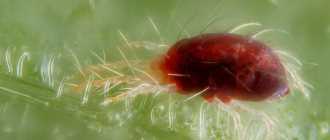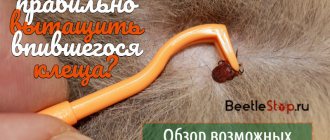Keeping at home
To successfully keep marbled cockroaches in your home, no special conditions are required. This insect adapts to apartments and regularly produces offspring. To do this, you only need to organize an insectarium and provide minimal care.
Why are marbled cockroaches bred?
Marbled cockroaches are feeders. They have a high meat-to-shell ratio, and, unlike crickets, are more nutritious and better digestible, so they can become the main food for amphibians and reptiles.
Insectarium
To keep marbled cockroaches, you can use any container with a wall height of at least 20 cm. A plastic box or glass aquarium is best suited. In this case, it is necessary that the top of the container be closed with a lid, otherwise the insects will quickly spread throughout the house. And to allow air to enter inside, you need to drill holes in it. Before introducing cockroaches into the insectarium, its internal walls must be lubricated with Vaseline or vegetable oil.
A layer of perlite and sand should be poured into the bottom of the container in a ratio of 3:1. The litter needs to be changed once every 3 months.
Also, when arranging your home, it is necessary to take into account the lifestyle and natural habitat of these insects. You should put, for example, egg packaging inside the container, which will create comfortable living conditions for a whole group of marbled cockroaches.
Features of care
For the full development and reproduction of insects, food and warmth are necessary. In this regard, they should be fed regularly, since in the absence of food they are able to eat their own larvae. The cockroaches' home should be placed in a secluded, dark place with a temperature of +32C. When the maintenance regime is reduced to +22C, their activity decreases and the reproduction process is suspended. You can maintain the optimal temperature in the insectarium using a ceramic heater, placing it directly above the home.
To feed marbled cockroaches, you need to install containers that should be removed during the day so that mold does not develop in the leftover food. Insects must also have free access to water. To do this, you should provide drinking bowls, place cotton wool at the bottom and pour water so that the liquid level barely covers this layer. Under such conditions, insects will be able to drink freely and will not drown. When the water becomes dirty, it needs to be changed.
For full reproduction and development of marbled cockroaches, it is necessary to maintain the humidity level within 60-70%. Dry air can cause the death of offspring during molting, and with high humidity there is a possibility of active growth of bacteria inside the insectarium. To maintain the required level, it is necessary to place jars of water inside the home, covering them with gauze and securing them with an elastic band so that insects do not drown in them.
How and what to feed marbled cockroaches?
Since marbled cockroaches serve as food for animals, it is necessary to know what to feed them correctly so that they have nutritional value.
The basic rule is that carbohydrate and protein foods cannot be mixed for them, and these foods should be given in different containers. In this case, it is necessary to refresh the food every 3-4 days. Insects' nutrition must be balanced.
For feeding you should use:
- eggs;
- cottage cheese;
- meat scraps;
- bread;
- cereals;
- bran;
- cabbage, lettuce leaves;
- apples, pears;
- oranges;
- carrots, beets.
Insects should also be regularly fed high-protein dry food intended for fish, dogs and cats. This will prevent a deficiency of this component.
The following foods are contraindicated for marbled cockroaches: nuts, bananas, tomatoes, lard, cheese.
Breeding Features
To breed marbled cockroaches, it is enough to initially have 20 adult individuals. Moreover, for every 3 females there must be 1 male for successful fertilization. After mating, a capsule with eggs is formed inside the female, which she carries for 3-4 weeks until she begins to give birth.
After the birth of the larvae, the female marbled cockroach awakens its maternal instinct. At first, she carefully takes care of the offspring and protects them from possible danger. The transformation of the larva into a sexually mature individual occurs in 4-8 months. The duration of this period depends on the level of humidity and temperature. The female gives birth to 10-30 larvae, and this happens 6 times throughout her life.
Reproduction
Breeding goals
Turkmen cockroaches are fed to hedgehogs, spiders, lizards, mantises, reptiles and other insectivores. There are several advantages of feeding insects:
- thin chitinous cover and low defensive ability make them desirable prey for predators;
- high protein content: 76% in small nymphs, 53% in nymphs of 3 instars, as well as a vitamin B concentration of 12;
- unlike the popular food - crickets, Turkmen cockroaches are silent;
- lack of specific odor;
- rapid reproduction.
Among the disadvantages of breeding Turkmen cockroaches, there is a long incubation period for oothecae - up to 1.5 months and the growth time of nymphs - 4 months.
Important!
Despite the rich mineral, vitamin and nutrient composition, Turkmen cockroaches contain little calcium and vitamin A. If you feed exotic pets exclusively with cockroaches, vitamin deficiency will cause a reduction in life expectancy and a decrease in the reproduction rate.
They breed Turkmen dogs for their pets or to earn additional income. The average price of one individual is 3 rubles. Sold via the Internet, pet stores, thematic groups in VK, OK.
Flight
Although adult males are known to rarely fly, they have fully developed wings and pigmented muscles typical of cockroaches, capable of meeting the high-speed energy needs of long-duration flight. In laboratory tests from a 2.5 m high ramp, adult males were able to align dorsoventrally and rapidly spread their wings to control and manipulate gliding; however, active flight did not maintain or increase altitude. Adult females have only vestigial wings and lack the muscles needed for flight, and have shown no flight control in test runs.
Introduction to the USA
The Turkestan cockroach was first spotted in the United States in 1978 near the former Sharpe Army Depot in California, and soon after appeared at Fort Bliss in Texas and several other military bases. Researchers believe the species arrived on military vehicles returning from Central Asia, possibly Afghanistan. Since then, this species has rapidly replaced the black cockroach (Blatta orientalis) in urban areas of the southwestern United States "as the most important peri-house species" because it surpasses it in the number of eggs laid and the rate of development. A 2013 study found that at 26.7°C, male and female nymphs matured into adults in an average of 222 and 224 days, respectively. They typically live in underground containers such as water meters, irrigation and electrical boxes, voids in concrete, cracks and crevices, and hollow block walls.” They are well known in the southwest and parts of the southeast, and have also been recorded in the northeast.
Adult males
Features of breeding Turkmen cockroaches
To understand how to breed Turkmen cockroaches, you must first learn about the intricacies of their reproduction process. In small colonies, oothecae need to be removed from the cockroach terrarium. The bottom of the container, which is intended for young individuals, must be covered with moss. At low temperatures, oothecae take much longer to mature. Immediately after birth, the young do not eat food. After the adaptation stage, young cockroaches can be transplanted to adults.
Nymphs and adult Turkmen cockroaches act as food for exotic pets, which must be removed from the home with a net specially designed for this purpose. Before giving cockroaches to animals for consumption, some advise freezing them so that the insects do not have the opportunity to scatter while feeding.
Parasites
In Iraq, Turkmen cockroaches were found to host larvae of the parasitoid wasp Ampulex assimilis. An adult wasp stings a cockroach, pulls or leads it by its antenna towards a wasp nest, lays an egg on the cockroach's middle leg thigh, then covers the nest with debris. After hatching, the wasp larva feeds externally and then enters the cockroach for further feeding and pupation.
The wasp leads the cockroach into the nest by the antenna. The photo shows an emerald cockroach wasp (Ampulex compressa) from the same genus as described in the article
Reproduction
Before mating, males organize peculiar tournaments. They actively run after each other, trying to drive away the opponent. A special dance is performed for the female with raising her wings. Wing flapping not only looks impressive, it is necessary for the spread of pheromones. Females are viviparous, the number of offspring reaches 20-30. The incubation period lasts about 1 month. In unfavorable climatic conditions or due to hunger, the female throws out the ootheca prematurely. Underdeveloped larvae do not hatch from eggs and die.
The offspring are lighter than the adults, they are beige with a marbled pattern. They are born 2 mm long. The young spend their time buried in the ground. It will take them 4-7 months to reach the adult state.
Why do people keep Madagascar hissing cockroaches?
Food can be either fresh or rotten. Insects often eat the corpses of relatives. In order for the shell to be strong, the diet must include foods containing large amounts of calcium.
This is especially important for young animals and during the mating season.
A colony of 30 individuals is freely located in a terrarium measuring 20x30x40 cm. The insect has soft pads on its legs, which allows it to move freely even on a completely smooth surface. This obliges the owners to close the container with the colony tightly enough. Air access is provided through small holes.
Even if the individual manages to somehow leave the terrarium, the owner should not worry. Keeping such a specific pet at home is possible due to its calm nature, without displays of aggression. Therefore, the presence of the insect is allowed even in those families where there are small children. There is only one limitation - if someone in the household has allergies.
Male and female have some external differences
Externally, it is not difficult to distinguish individuals of the Madagascar cockroach. Nature endowed males with two raised horns located on the prothorax. Another sign is the larger size of the antennae when compared with the length of this part of the body in females.
Having such an unassuming pet at home is quite interesting. Suitable conditions and good nutrition will make the life of the insects fulfilling, and you will receive a good income by selling the excess individuals.
Madagascar cockroaches are harmless insects. They are not capable of harming a person, much less biting him. They do not emit any unpleasant odors. The hissing of insects may unnerve some people at first, but owners quickly get used to it and even begin to get bored when cockroaches are silent.
Keeping insects at home is interesting and exciting. Some owners organize exciting cockroach races. Others simply admire them, enjoying their presence in the house. The Madagascar cockroach often brings in quite a bit of income.
Arrangement of the insectarium
Most breeders store and raise feeder cockroaches in special small clear plastic tubs that can be purchased at most hardware stores. Although you can choose any sizes; It is preferable to use 1 meter by .5 meters and about 30 cm in depth.
Advice: before purchasing; check that they are smooth - some have textured sides that can be used by cockroaches to climb on.
You can fill the storage container with soil - this is soil about a centimeter deep. You can throw a few pieces of decontaminated tree bark as cover so they can hide.
Observe temperature conditions. This is an important factor for the comfortable life of your food cockroaches. The warmer they are, the faster they grow and reproduce. They are kept in a warm room, but can be kept on a warm surface or electrically heated boards.
Tip: If you notice that your young Turkmen cockroaches are dying, it is probably because they are not getting enough moisture to which they are accustomed in the wild and their chitinous covering is drying out.
Feeding tartar in captivity
Keeping them at home requires compliance with a number of rules. It is advisable to arrange a “dry” corner in the insectarium, in which you can put dry food for aquarium fish, cats and dogs (loose or in the form of small granules), oatmeal, dried young oak leaves, finely chopped dandelion greens. Although cockroaches, as a rule, take food to secluded closed places to eat.
You can give them fresh fruits and vegetables a couple of times a week (usually from bits of what you ate for lunch, carrot peels, apple seeds.
Thanks to such taste preferences, growing Turkmen cockroaches does not require large financial expenditures.
Taratra never eats its relatives, and the skins remain after molting. This may cause mites in the cage or an allergic reaction. Therefore, the insectarium should be cleaned regularly.
It is not recommended to give cockroaches bananas, cabbage and tomatoes. Eating them worsens the taste of the insect, which is unfavorable when growing it for food.
Advice:
Put fresh fruits or vegetables in the mold will develop, it will not attach to the side of the bathtub, providing a manual escape route for cockroaches.
You must choose the optimal menu for your pets yourself. Avoid placing food scraps that attract fruit flies.
When removing old food, check to make sure there are no baby cockroaches or eggs left behind before disposing.
Colony expansion
There are three developmental stages of the red cockroach; egg, nymph and adult. However, Turkmen cockroaches have a shorter development period compared to Oriental cockroaches, and their females also produce significantly more eggs than Oriental cockroaches.
Each female and her offspring can produce about 200 cockroaches in one year. Development from a newly emerged nymph to an adult can take anywhere from a year to two years or more.
In many places, the Turkmen population was able to displace competitors due to its biological characteristics.
Why are they dangerous for people?
- Cockroaches are really smart. Perhaps this is why they are constantly trying to get into schools, homes and other places. How else do you think they were able to survive for 300 million years, surviving the dinosaurs and many other mass extinction disasters?
- They adapt well to heat and cold. Plus, they have powerful adaptations to many toxic chemicals. They survive some exposure to chemicals and pesticides and live to pass on the experience and story of their salvation to their descendants. For example, they may discover a pesticide use, decide they don't like it, and decide to avoid it in the future. They have enzymes that can detoxify some pesticides so the cockroaches can continue to live.
- They have learned to pass on the ability to adapt to their children, making some pesticides ineffective after a relatively short time. This resistance is certainly forcing the pesticide industry to develop new cockroach control products.
- Turkmen cockroaches pose all the same types of danger as any other domestic cockroach.
- Because they are drawn to human food, cockroaches cause food contamination. Cockroaches defecate and regurgitate the food they eat. While this is disgusting in itself, it also spreads bacteria and parasites that may live inside them. Some of the dangers of cockroaches in this regard include bacterial infections. The bacterium Pseudomonas aeruginosa is particularly common in cockroaches and can be transmitted to humans. Salmonella bacteria can also be spread by cockroaches, which can cause illnesses ranging from food poisoning to typhoid fever.
- Another health risk from cockroaches is allergic reactions. Cockroaches are one of the most common allergens reported, with studies finding between 20 and 60 percent of urban residents are allergic to cockroaches. These symptoms can range from itching and redness to severe asthma.
- Another troubling, although unlikely, health risk of cockroaches in close contact with humans is entry into body cavities. This is another highly unlikely event, although it has been seen when infestations are particularly severe.
Turkmen cockroach, a few words from the author:
I have had a colony of Turkmen cockroach for quite some time, about a year. I’ll say right away that I didn’t create any special conditions for them, since I didn’t have the goal of creating a rapidly growing colony. Contrary to all the advice on the Internet, my Turkmen cockroaches do not have a drinking bowl; they get moisture only from succulent food. They sit on egg trays, the temperature is 24-26 degrees, the conditions are generally similar to the marbled cockroach, and the aquariums are located next to each other. Until recently, the oothecae were removed, placed in an “incubator” with high humidity, and then the fines were deposited back. But when there were too many ootheca, I stopped doing this, I discovered that the little things came out just fine without high humidity, right in the parent’s aquarium.
They write that they do not crawl on glass and other smooth vertical surfaces. But for quite a long time I didn’t understand how the cockroaches were scattering around the apartment, and one day I saw the escape itself. The cockroaches escaped using the glue and sealant inside the aquarium, climbed up the seam, and jumped out of the aquarium. Note to you if you decide to keep them in an old aquarium, like I did.
Appearance Features
The Turkmen cockroach is an insect with a body length of no more than 3 cm. It is similar to other species. Body color is brown with a red tint. The color is monochromatic. Male cockroaches have wings on their backs; females do not have them. can not. Long mustache and movable legs. Females are larger than males. It is very easy to distinguish them. In pregnant individuals, a transparent orange ootheca appears at the end of the abdomen.
Caring for the Turkmen cockroach is similar to breeding the marbled cockroach. But the situation is made easier by the fact that Turkmens do not crawl on glass, a slippery surface. Even with the lid open, no one goes anywhere in the insectarium.
Cockroaches are kept in aquariums, glass boxes, and plastic boxes. There should be small holes at the top for free air circulation.
- humidity is about 60%; to maintain the required humidity, the walls of the insectarium are sprayed with water from a bottle several times a day;
- temperature from +24 to +30 degrees Celsius must be taken into account;
- at the bottom of the box there is no special soil, sticks, twigs, or special substrate; the simplest option is egg trays; as they become dirty, replace them with others;
- Insects do not like light; they are placed in a dark room.
Reproduction
Madagascar cockroaches (unlike their other relatives) are viviparous. From the moment of fertilization, the eggs develop in the female’s abdomen in a special capsule - the ooteca. During the gestation period, the female periodically “ventilates” this capsule, pushing it out of the anus. Other cockroaches reproduce differently: they do not carry a capsule with eggs in themselves, but discard it.
The Madagascar ootheca is a very pale yellow color and is not as hard as the ootheca of other cockroaches.
The development of eggs is greatly influenced by temperature: the cooler it is, the longer the female’s pregnancy lasts. On average it takes from 50 to 70 days.
Hatching of the larvae also occurs inside the female, after which the “mother” pushes out both the larvae themselves and the remains of the ooteca. The “babies” are still very small after birth, just a few millimeters, white in color. Their shell is still very soft, but after eating the ootheca, the nymphs darken in a few hours and acquire dense cover, becoming indistinguishably similar to adults (except for size).
Each brood of the Madagascar cockroach contains about two dozen eggs. At first, the female mother takes care of the children, constantly being close to them and scaring away anyone who approaches with her hissing. Such care among all cockroaches is characteristic only of this genus. After some time, the nymphs crawl away from the mother and lead an independent life.
During the process of growth, the nymph molts 6 times, shedding her now small shell. Before each next molt, the activity of the nymphs decreases; they try to hide from prying eyes due to temporary defenselessness, as their body becomes soft and vulnerable (and also discolors again). However, this is not for long: the nymph does not throw away her former shell and does not leave it anywhere, but eats it, and after that it quickly darkens again and is overgrown with a new hard cover. These 6 molts last from the moment of hatching for about six months, sometimes 1 year.
Features of life
Perhaps cockroaches of this species may seem threatening and unpleasant to some, but by their nature they are quite timid and try to avoid contact with objects that threaten them. In their native habitat, they live in the jungle, but in daylight they usually hide under leaf litter. They feed mainly at night, picking up decaying vegetation and animal remains. The mouthparts of “Madagascars” are not adapted for biting, so even if they try to bite a person, they will not be able to cause harm.
The only way for cockroaches to escape from predators is guerrilla tactics. When danger approaches (for example, if primates or a bird are trying to eat an insect), they try to move less, as if merging with the environment, pressing as hard as possible to the surface.
Since the back of a cockroach is very smooth, it is very difficult to grab it. Hiding in this way, it begins to hiss sharply and piercingly, which is why it received the corresponding name.
To some animals and birds hunting for tropical inhabitants, this sound seems similar to that made by snakes. Sometimes the hissing frightens even inexperienced cockroach owners who are not accustomed to such a defensive reaction from their “pets.”
The hissing sound is produced by special organs - spiracles. For them to start working, the cockroach bends its body into an arc, thereby compressing its lungs, which is why the corresponding signal appears. In some cockroaches it looks like a distinct hiss, in others it resembles a whistle. It is noteworthy that males and females use hissing under different conditions. Thus, females make a sound when danger approaches in order to scare away the attacker. Males can hiss when courting a female, as well as during a battle with their same-sex relatives.
When considering buying Madagascar hissing cockroaches, future owners wonder how long their pets will live. Under natural conditions, their life expectancy ranges from 1 to 1.5 years. In terrariums and aquariums they can live up to 3 years. Sometimes they are able to live 5-6 years, but this is an exceptional case. Shortly before death, the color of cockroaches becomes lighter.
Another problematic question for beginners: what to feed the Madagascar cockroach? In fact, they are not so picky about food. They usually feed on rotting remains of fruits, berries, green and soft pieces of plants.
Like other insects, Madagascar hissing cockroaches prefer places where there is a lot of wood, sawdust, rotting parts of trees, and dust. In their environment, they are usually located on old stumps, under snags.
Description
In nature, the Madagascar cockroach lives in the tropical forests of Madagascar. Thus, insects are endemic to the island, their range is limited only to its territory. It is a large insect weighing up to 60 grams and length up to 90 mm. In nature, it lives on tree branches and on the ground, hiding under a layer of fallen leaves, bark, branches and other plant remains. Prefers places with high humidity. It feeds on the remains of decaying fruits, berries, plants, mushrooms and other rotting vegetation.
The Madagascar hissing cockroach does not have wings. Its body is covered with a durable shell, the color of which can vary from light brown to black. Females are larger than males. Males are distinguished from females by the presence of two cone-shaped protrusions, similar to small horns. An additional distinguishing feature can be the condition of the mustache. In females, the mustache is intact and even, while in males it is damaged and even partially torn off. The reason for this is the constant struggle of males among themselves for females.
What they look like, lifestyle
Adults do not grow more than 3 cm. Sexual dimorphism is pronounced:
- males are red, brown-orange, have thin yellow wings, and can fly;
- The color of females is dark brown, black with cream patches, a light stripe is noticeable along the edges of short, reduced wings, females are wider than males.
Nymphs do not have wings, the front part of the body is brown or copper, which reminds them of Madagascans, and the back part is black. A photo of Turkmen cockroaches is presented below.
On a note!
There is conflicting information regarding the flight abilities of males. Foreign authoritative sources (English Wiki) note that the Turkestan cockroach is capable of flying. Russian-language resources tend to believe that Shelfordella tartara can only actively flap its wings, creating the illusion of flight.
In their natural environment they live under stones, in abandoned damp hollows. They are often observed in areas near water bodies. They are active at night. The full life cycle does not exceed 9 months. They live in the adult stage for 4-5 months.
Tartars
Insects of this species are unpretentious and, with minimal food costs, they provide an excellent yield of protein products, which pets happily consume.
The necessary conditions
Breeding longhorned beetles should begin with the purchase of a terrarium. Other containers will also work: an old aquarium or a plastic container. It should have small holes in the lid so insects can breathe. You can also cover the terrarium with a net with small cells.
In the insectarium it is necessary to create special conditions for keeping tartars:
- A substrate is poured into the bottom of the container, which is shavings, sawdust or moss. It is necessary for the placement of ootheca and the development of cockroach offspring. To increase the area, lay out pieces of cardboard egg boxes, bark and lay out twigs on which the young animals like to crawl.
- A feeder and a drinker are placed in the container. A sponge soaked in moisture is placed at the bottom of the drinking bowl to prevent cockroaches from drowning in the water. Sometimes test tubes are used for water by filling them with wet cotton wool.
- The temperature should be quite high: at +28-+30C, at room temperature the reproduction rate decreases. In nature, Turkmenistan cockroaches live in a dry climate, so there is no need to additionally spray the insectarium.
“Scenery” in the form of branches is needed by young individuals for molting. The process occurs in a vertical position, when the individual’s head is lowered down. This makes it easier to remove the old chitinous cover. If molting occurs on a flat surface, the young cockroach may be injured.
Note: Longhorn beetles of this species are not able to climb slippery surfaces, but they can jump quite high. If the tartar escapes, then a new colony of Uzbek cockroaches will settle in the apartment. Unlike marbles, they take root well at home.
Nutritional Features
Turkmen cockroaches are omnivorous. But pets who eat them are more picky. They refuse protein foods if the insects were fed pumpkin, bananas, cabbage or tomatoes.
The following is added to the barbel diet:
- pieces of vegetables and fruits,
- bulk or small food intended for aquarium fish, cats and dogs,
- cereals,
- dried young oak leaves,
- chopped dandelion greens.
Note: Insects eat everything and need to be fed regularly.
It is important to have protein in their diet. Its lack leads to a decrease in female fertility and the development of cannibalism in the colony, which is noticeable by bitten wings
The insectarium must be cleaned, removing remnants of old food and stale water.
It is also necessary to change the litter with the remains of chitinous cover and excrement so that the cockroaches have a good microclimate. Dust from chitin can cause allergies in people living in the apartment
The insectarium must be cleaned, removing the remains of old food and stale water. It is also necessary to change the litter with the remains of chitinous cover and excrement so that the cockroaches have a good microclimate. Dust from chitin can cause allergies in people living in the apartment.
Breeding rules
During her life, a female is capable of bearing offspring up to 8-10 times. This is due to its life expectancy, which is limited to 4-5 months. Some time after breeding, the female hides the capsule with eggs in the substrate.
Shelfordella tartara reproduces actively; oothecae need to be looked for in the substrate and collected by removing them from the insectarium. They are placed in an incubator, the bottom of which is lined with moss. Ootheca take a long time to mature if the temperature does not correspond to the optimal one. When the larvae are born, they are allowed to molt. During the period after birth they do not feed. After incubation, they are transplanted into a common colony, where they quickly adapt.
Pets are fed with adults and young nymphs, which are removed from the container using a special net. Before serving a portion of “cockroach protein”, it is recommended to keep the individuals in the cold for a little while. At the same time, they lose activity and do not scatter when they are eaten by another voracious individual: a parrot, lizard or turtle.
The Turkmen cockroach is ideal as a fresh protein food. It is easy to grow and does not require special expenses for nutrition and care. But if this option is not suitable for owners of exotic animals, then you can buy a portion of cockroaches at a pet store and treat your pets with a delicacy from time to time.
https://youtube.com/watch?v=grGZtz572Y4%3Ffeature%3Doembed
Exotic cockroaches
These cockroaches are specially bred by lovers of exotic animals. Some exotic species of cockroaches reach 10 cm in length. Some keep cockroaches in the house as a pet, but many breed large cockroaches to feed various pets (snakes, frogs, lizards, fish), and do not require special care, so many prefer not to buy dubious food, but to grow them themselves and be sure of its freshness.
Death's head cockroach (Blaberus craniifer)
This species lives in the tropics of South and Central America.
It got its name from a pattern that resembled an ugly mask located on the insect’s head. It is also called the Cuban cockroach. Cockroaches grow up to 8 cm, the chitinous shell is matte black, the cephalothorax is light with a black pattern in the middle, as seen in the photo. The Cuban cockroach can fly well, and its wingspan reaches 10 cm. When in danger, the cockroach releases a pungent odor that does not disappear for a long time. Life expectancy is about one and a half years.
Rhinoceros cockroach (Macropanesthia rhinoceros)
The Australian cockroach spends most of its time underground and is often called the giant burrowing rhinoceros cockroach for its ability to dig deep holes. At night, the cockroach crawls to the surface in search of food; they feed on fruits, leaves and do not disdain carrion.
An adult grows up to 9 cm in length and weighs up to 40 grams; the photo shows a female and a male rhinoceros cockroach. The Australian cockroach is often found among lovers of exotic cockroach species.
Chess cockroach (Therea bernhardti)
This species lives in India; during the day, insects hide in fallen leaves, and at night they come out in search of food, like most representatives of the species. Cockroaches are black in color, but have white spots on their backs arranged in a checkerboard pattern. Chess cockroaches are long-lived and can live in good conditions for up to 5 years.
These cockroaches love high humidity around 70-80% and warm air 25-30°C.
Madagascar hissing cockroach
The most common representative of cockroaches found in insectariums. It is this species that appeals to lovers of exotic animals. Unpretentious, quiet and does not require skills to maintain. The size of this giant reaches 10 cm, and their main trump card is hissing in case of danger, which is created when the insect suddenly releases air from special spiracles.
The optimal conditions for keeping are 23-30° degrees, and the humidity should be around 60%.
Egyptian turtle cockroach (Polyphaga aegyptiaca)
The cockroach has a rounded body shape, reminiscent of a turtle shell, with a maximum size of 4.5 cm. The shell is shiny black, covered with transverse plates.
Habitat: Central Asia, Caucasus, feeds on leaves, animal remains, feces. The lifespan of the Egyptian cockroach is 4 years.
Green banana cockroach (Panchlora nivea)
A striking species of cockroaches that fly well. They have taken root in banana plantations and feed on leaves. This species was discovered quite recently and has not yet gained popularity among cockroach lovers.
The cockroach is native to the Florida forests and Cuba. The optimal temperature for this species is 27 degrees Celsius. The cockroach is small in size and reaches 2.5 cm.
Forest cockroach (Ectobius lapponicus)
Lives in wooded areas, feeds on tree leaves, carrion, and plants. Hides in tree roots and under leaves.
There are a huge number of species of cockroaches, there is even a Japanese pest. Almost all types of cockroaches are harmless to humans and cannot bite through the skin.
Many insects have earned the title of exotic pets. The Turkmen (Central Asian, Turkmenistan) cockroach was no exception. However, the purpose of its breeding is somewhat different from other pets. The Turkmen cockroach is an excellent food component for such fauna as opossums, chameleons, hedgehogs, mantises, spiders and other living creatures that consume such insects with great pleasure.
The main difference between Turkmen cockroaches is their ability to escape, or rather their complete absence, they also do not emit an unpleasant odor and do not have a rough chitinous cover
This is why breeding Turkmen cockroaches is so popular among a large number of breeders - they are not whimsical, do not know how to move vertically and reproduce very quickly - all this further attracts the attention of potential owners of exotic inhabitants
Development and life cycle
Cockroaches are insects with incomplete metamorphosis. Their newborn nymphs look exactly the same as the adults, with a few small differences (such as the lack of wings). These nymphs shed their skin (molt) every few weeks and move on to the next larval stage. Newborn larvae are called L1 nymphs, after their first molt - L2 and so on until they become adults. Adults can be identified by the presence of wings: nymphs do not have wings, but adults do. Some species have no wings at all, even as adults.
Cockroach eggs are found in capsules called oothecae. They consist of foam that protects the eggs. Some species drop the oothecae on the ground, others glue them to a location of their choice, and still others store them inside the body until the nymphs hatch.
Ootheca of the Turkmen cockroach
